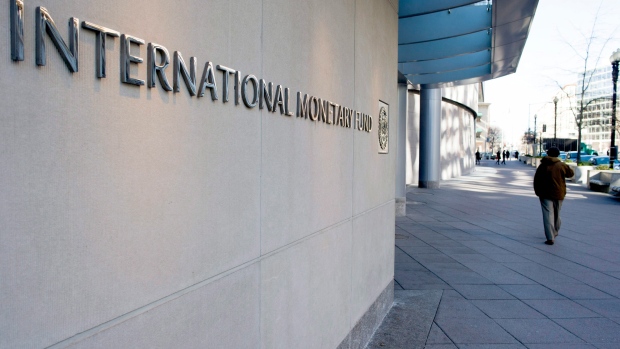Apr 18, 2018
World debt hits record US$164 trillion as crisis hangover lingers
, Bloomberg News

The world’s debt load has ballooned to a record US$164 trillion, a trend that could make it harder for countries to respond to the next recession and pay off debts if financing conditions tighten, the International Monetary Fund said.
Global public and private debt swelled to 225 per cent of global gross domestic product in 2016, the last year for which the IMF provided figures, the fund said Wednesday in its semi-annual Fiscal Monitor report. The previous peak was in 2009, according to the Washington-based fund.
“One hundred and sixty-four trillion is a huge number,” Vitor Gaspar, head of the IMF’s fiscal affairs department, said in an interview. “When we talk about the risks looming on the horizon, one of the risks has to do with the high level of public and private debt.”
The global debt burden clouded the IMF’s otherwise upbeat outlook of the world economy, which is in its strongest upswing since 2011. The fund on Tuesday forecast expansion of 3.9 per cent in 2018 and 2019, while saying in subsequent years the global economy could be impacted by tighter monetary policy and the fading effects of U.S. fiscal stimulus.
Surging private-sector debt, particularly in China, is driving the build-up. China has accounted for almost three-quarters of the increase in private debt since the global financial crisis, according to the fund.
The IMF figures lay bare the scale of the debt hangover from which the world is still recovering a decade after the financial crisis pushed the global banking system to the brink and tipped the world economy into recession. Governments increased spending to boost growth, while central banks resorted to unconventional methods to ease financing conditions, such as buying bonds.
High levels of sovereign debt could make it difficult for governments to refinance when their debt reaches maturity, especially if financing conditions tighten, the IMF said. Large debts also impede the ability of nations to increase spending if their economies fall into recession, and may cause a drag on growth, according to the fund.
The IMF said countries should take decisive action to rebuild their fiscal buffers so they can increase spending during hard times. The fund urged the U.S., whose budget deficit is expected to surpass US$1 trillion by 2020, to “recalibrate” its fiscal policy so government debt-to-GDP levels decline over the medium term.
The combination of last year’s tax cuts and increased government spending in a recent U.S. budget deal will benefit all income groups, the IMF said. However, those in the top quintile of incomes would benefit the most, followed by those in the bottom quintile, the fund said. As a result, the measures may contribute to the further “hollowing out” of middle-class incomes, it said.
Many governments have troubling debt-to-GDP levels, according to the fund. More than one-third of advanced economies had debt-to-GDP levels above 85 per cent, three times more nations than in 2000, the IMF said. Among major economies, Japan had the highest debt-to-GDP level last year, at 236 per cent, followed by Italy at 132 per cent and the U.S. at 108 per cent.
Meanwhile, a fifth of emerging markets and middle-income countries had debt levels above 70 per cent of GDP, led by Brazil at 84 per cent and India at 70.2 per cent. Gross government debt in China stood at 47.8 per cent last year, according to the IMF.
